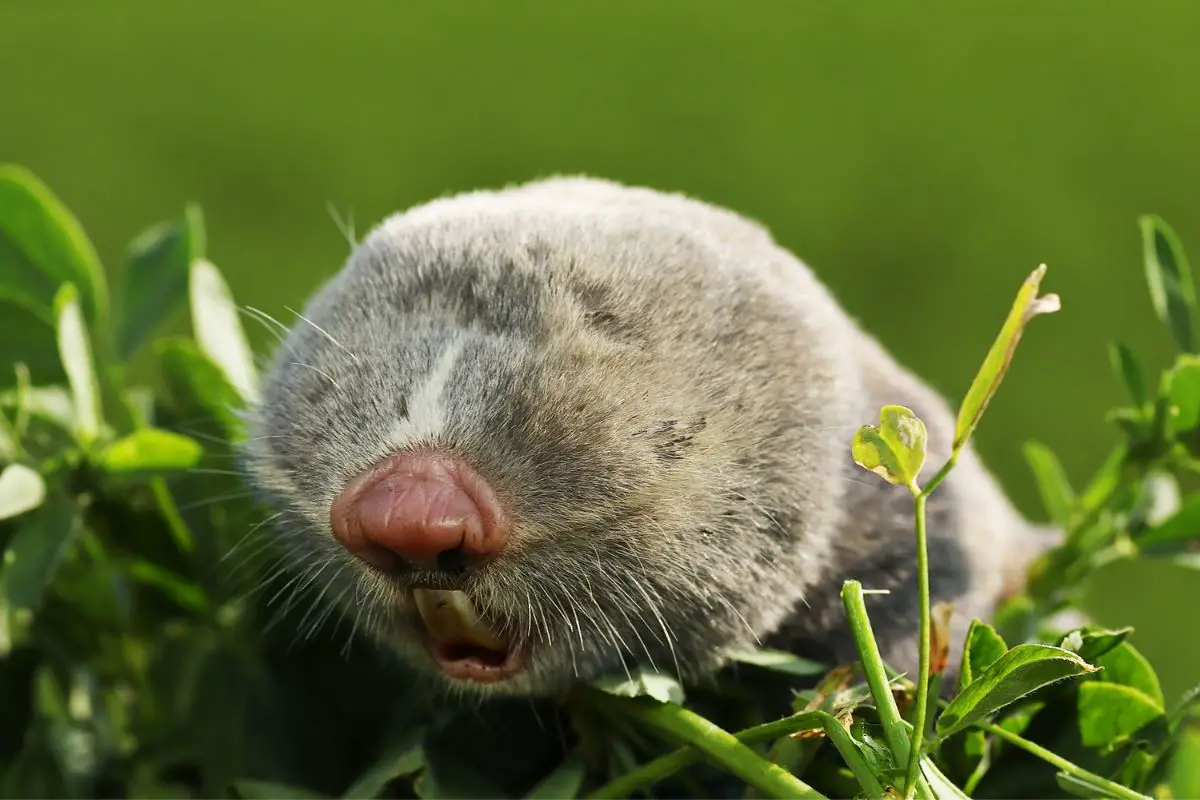
Moles are considered garden pests, but they can improve soil quality. These velvety and eerie-looking mammals rarely pose any threat to people since they mostly live underground. Moles’ strong paws are suitable for digging soil.
Hence, they are called subterranean mammals. Moles mostly live on earthworms. They paralyze earthworms with their toxic saliva while storing them for meals.
They can grow from 4.2 to 6.25 inches. And that is the length from the snout to the rump. Its tail can add an additional 1 to 1.5 inches to its compact size. It weighs between 70 and 130 grams.
Moles are prevalent in South America and Antarctica. Their habitats include gardens, sand dunes, grasslands, urban zones, mixed woodlands, and diggable soil lands. Moles lead a solitary underground life.
Digging tunnels and preying on earthworms are what they predominantly do. In terms of their lifespan, moles typically live up to 3 years.
1. Typical Vole
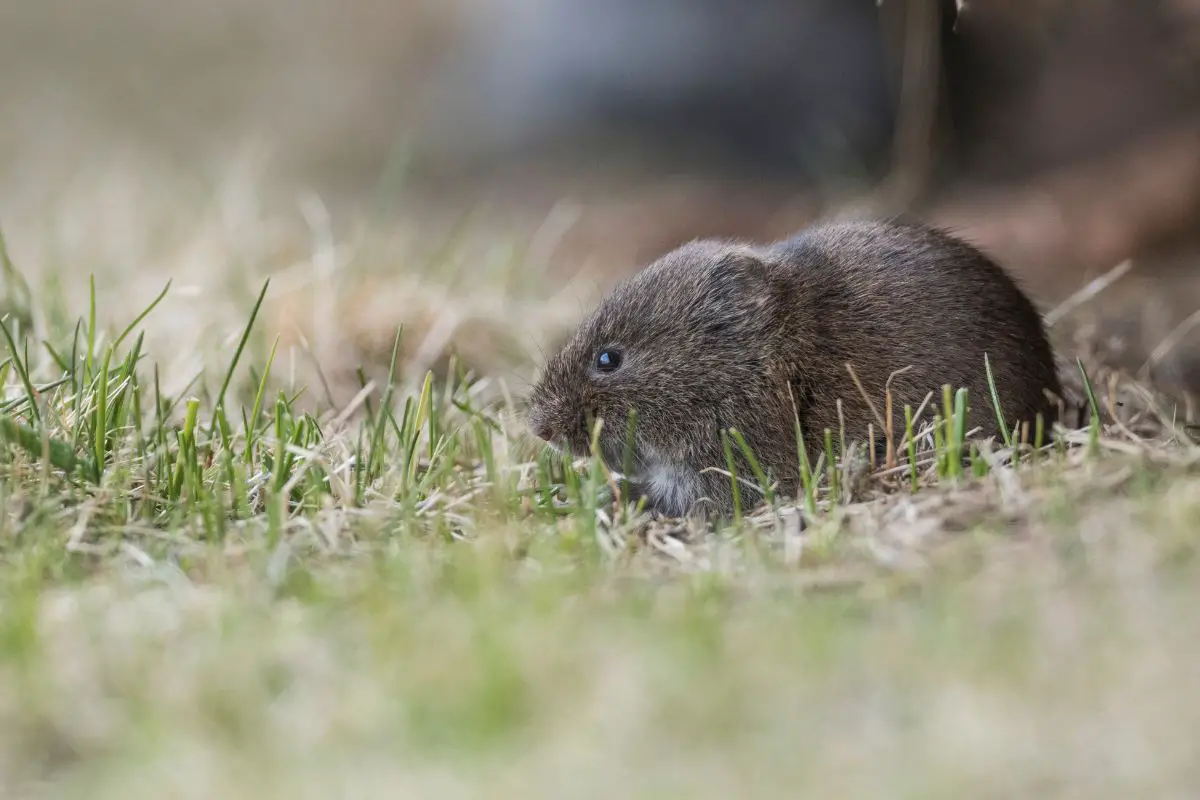
A typical or common vole is a European rodent that is also known as the short-tailed field vole. Its scientific name is Microtus arvalis.
Where It Lives?
The typical vole largely inhabits European and Asian lands. You’ll find them in the sloped and shallow areas like crop fields.
Eating Habit
Common voles mostly live on grass, crop roots, stems, and plant leaves. Although they’re herbivorous, they tend to enjoy eating snails and insects too. But vegetation remains their primary source of food.
Animal Type
The typical or common vole is a mammal rodent.
Lifespan
The common wild vole can live up to 4.5 months, while its captive lifespan is surprisingly higher, precisely 4.8 years.
Weight & Height
A common vole may weigh 0.7 to 2.4 oz., depending on its age while it may grow from 3 to 5 inches in its lifespan.
Habitat & Behavior
Voles dig extensive tunnels for their habitat and protection. They remain within their home range while burrowing underground, aboveground, and through the snow. Voles rarely hibernate and stay active all year round.
They’re frequent breeders with 4 to 5 litters per year, and 5 to 6 pups per litter.
How It’s Similar to Moles?
Both voles and moles tend to dig the ground and develop tunnel networks for their habitation and protection.
How It’s Different from Moles?
Voles are herbivorous. Their primary diet consists of vegetables, such as grass, plant foliage, roots, bulbs, stems, etc. On the other hand, moles are carnivorous, living on earthworms, insects, grubs, etc.
Voles dig unraised protective tunnels while moles dig raised tunnel ridges.
2. California Vole
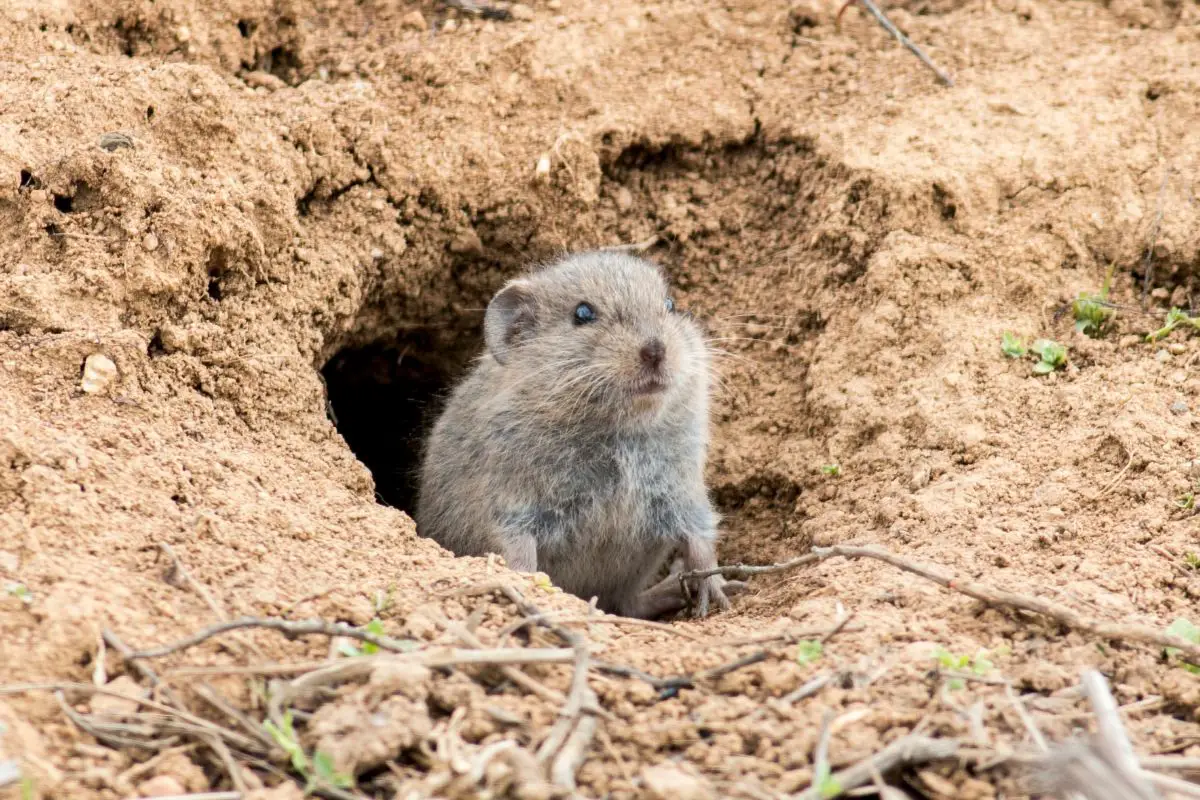
Popularly known as the California meadow mouse, the California vole is actually a vole species. It’s protected in California under the Endangered Species Act.
Where It Lives?
The California voles are found in broader parts of California as well as in a few parts of southwestern Oregon.
Eating Habit
California voles are herbivorous, so they like to munch on grass, flowering herbs, and sedges. They also eat ryegrass, wild oats, brome grass, etc. During winter, California voles love to enjoy tree roots and barks.
Animal Type
The California vole can be described as both a mammal and a rodent.
Lifespan
A California vole can live for about a year. Its lifespan is genetically brief, even in the most favorable of circumstances.
Weight & Height
The height of the California vole’s body ranges from 6 to 7.6 inches. Its tail lengthens its height by nearly 2.2 inches. The males weigh from 1.4 to 2 oz., while the females weigh around up to 2.2 oz.
Habitat & Behavior
Well-drained wetlands are the primary habitat for the California vole. For instance, this species primarily inhabits California’s chaparral woodland and shrubland. These mammals have a unique way of communication, which is the scent of their urine.
They urinate in the runways to track and contact the others. Sometimes, the adults squeak in crisis while the young ones do the same to call their parents.
How It’s Similar to Moles?
The California vole is about the same height as a mole. A typical California vole can grow up to 7 inches. Moreover, they both dig tunnels underground and above ground.
How It’s Different from Moles?
Although they’re of about the same height, the California vole weighs much less than moles. In some cases, an average California vole can weigh almost half as much as an adult mole.
3. Bank Vole
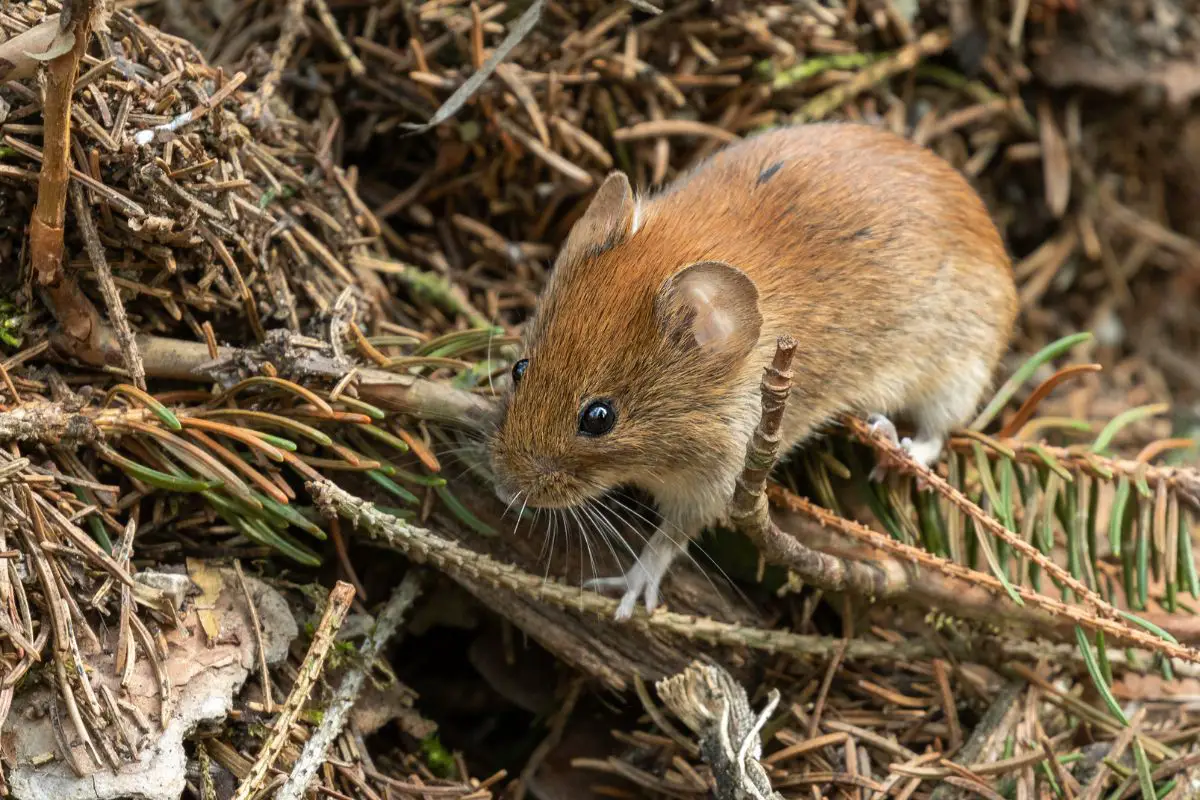
Scientifically known as Myodes glareolus, the Bank vole is the smallest vole species. It’s known for its red back and the gray patches on its body.
Where It Lives?
The Bank vole is mostly found in northwestern Asia and parts of Europe.
Eating Habit
The tiny little Bank vole loves to crunch and munch on hazelnuts and blackberries. Their species mostly live on fruits, insects, and nuts. They sometimes supplement their diet with snails, insects, and worms.
Animal Type
The Bank vole falls under the category of mammal.
Lifespan
The average lifespan of a Bank vole is about 6 months to 2 years.
Weight & Height
The height of a typical Bank vole ranges from just about 3.20 to 4.75 inches while it weighs about 0.5 to 1.2 oz.
Habitat & Behavior
You can find little Bank voles in the parks, gardens, hedgerows, woodlands, etc., at sea level and lower altitudes. Bank voles are naturally very active rodents. For instance, they often visit bird tables.
How It’s Similar to Moles?
Bank voles are similar to moles in terms of digging tunnels and eating habits. The former can dig tunnels for use as runways like moles but tend to be much smaller in length. Even though they are herbivorous, Bank voles also eat insects like moles.
How It’s Different from Moles?
Bank voles are nothing like moles in appearance, size, or weight. They are much smaller than moles. Moreover, they don’t look as eerie as moles.
4. Tundra Vole
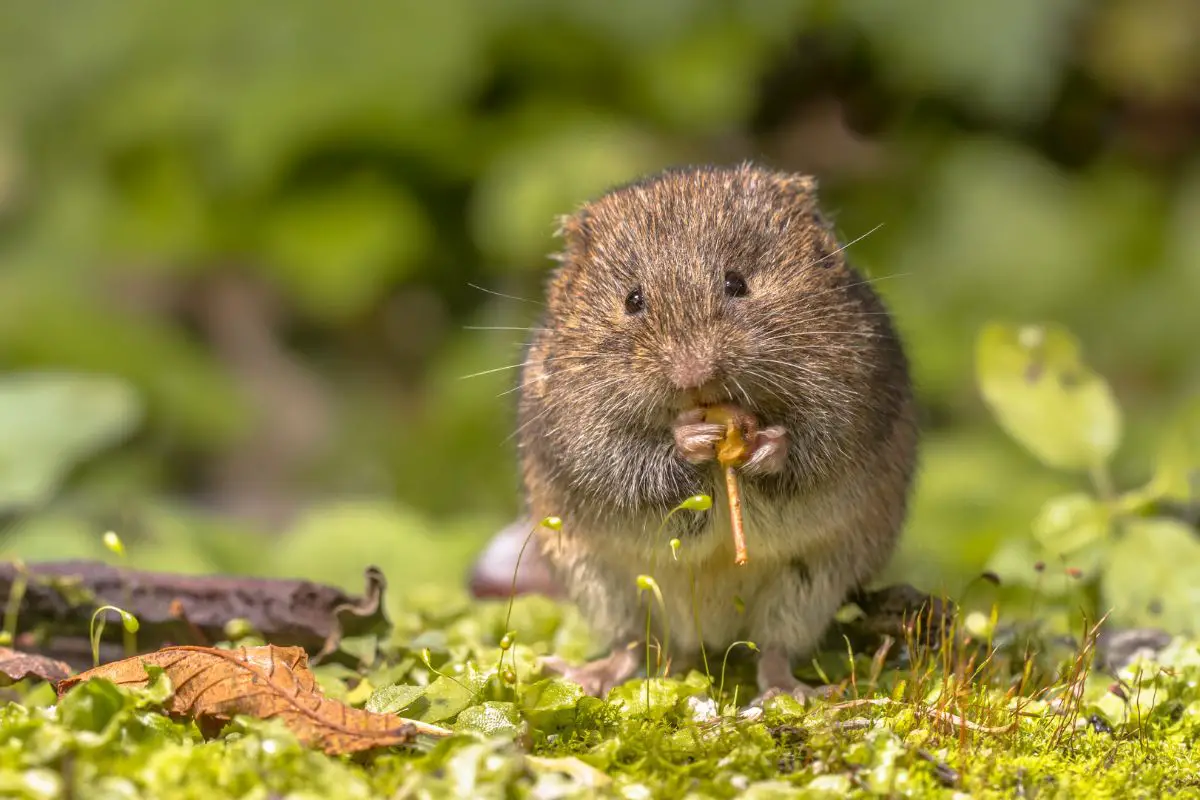
The Tundra vole is a medium-sized vole that is scientifically known as Microtus oeconomus.
Where It Lives?
The Tundra vole is available in many locations. But precisely, in northern and central Europe, Asia, and the northwestern part of North America.
Eating Habit
Tundra voles are dominantly vegetarian. Therefore, they mostly feed on grass, seeds, hedges, etc. It also eats licorice roots.
Animal Type
The Tundra vole belongs to the mammal class of the rodent species.
Lifespan
As per studies so far, Tundra voles can live up to 1.8 years in the wild.
Weight & Height
A typical Tundra vole weighs 0.8 to 2.8 oz. and its height is most likely to be around 8.6 inches from snout to tail.
Habitat & Behavior
Tundra voles naturally inhabit moist and damp lands and meadows near water.
They display polyphasic work, which means that they usually engage in multiple activities (seven on average) per day. Their peak hour is during twilight. Daylight is when Tundra voles tend to be more active.
How It’s Similar to Moles?
Tundra voles don’t have much in common with moles as far as their appearance, size, diet, or habitation are concerned. Only their relative weights could be called comparable. For instance, Tundra voles tend to weigh around 2.8 oz. on average, while moles tend to weigh slightly more on average.
How It’s Different from Moles?
As stated, Tundra voles are different from moles in almost every aspect. Tundra voles inhabit moist and damp lands, while moles live in grasslands, sand dunes, woodlands, etc. Tundra voles are strictly vegetarian, while moles live on insects and grubs.
Furthermore, Tundra voles dig shallow burrows on the soil while moles dig deep tunnel networks underground.
5. Prairie Vole
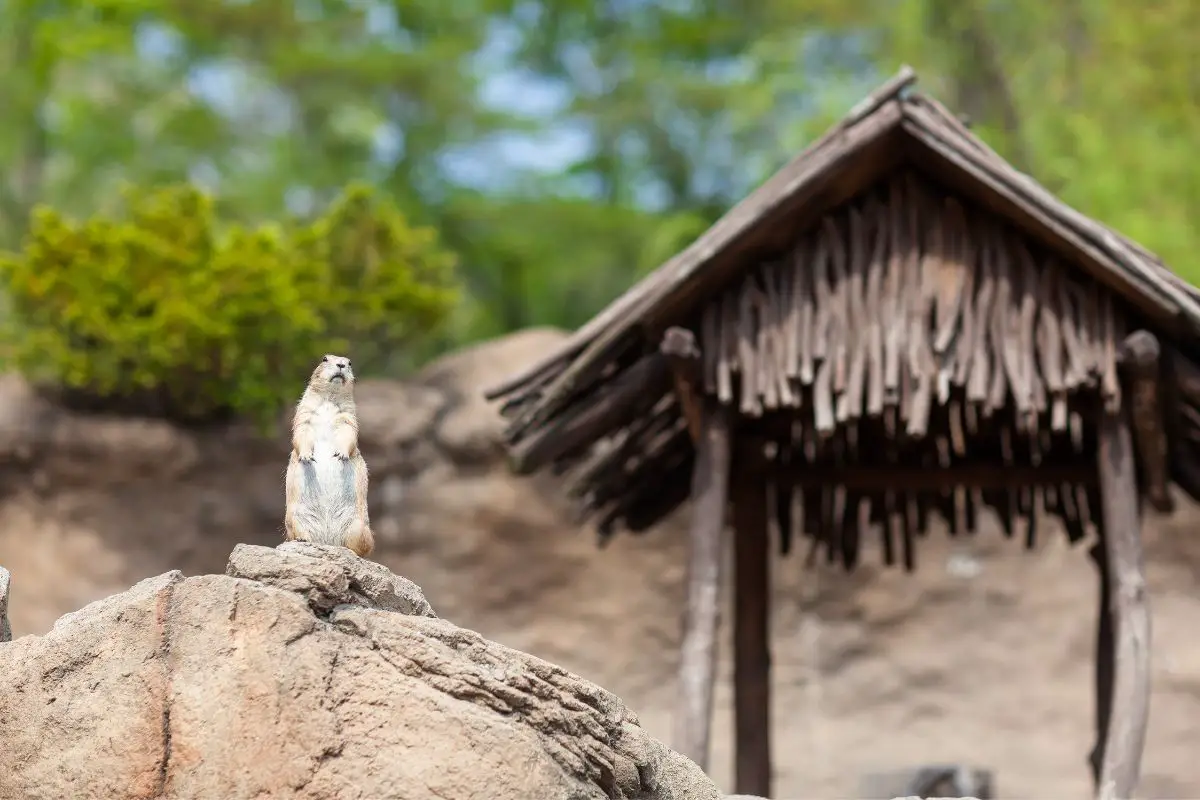
Prairie voles are brown or gray voles that are known to be great swimmers.
Where It Lives?
Prairie voles are found in central North America.
Eating Habit
Prairie voles have a predominantly vegetarian diet. They eat grasses, tubers, stems, roots, leaves, and grass fruits. In some cases, they supplement their diet with insects.
Animal Type
Prairie voles fall under the mammal category.
Lifespan
Prairie voles can live up to a year in the wild. Whereas, they can survive about 1.5 years in captivity.
Weight & Height
A prairie vole can weigh up to 1.5 oz., while its length can reach as high as 5.8 inches.
Habitat & Behavior
Prairie voles are natural inhabitants of dry and fallow fields covered in weeds and grasses. In terms of behavioral traits, they demonstrate an unbelievably strong bond with mates. Besides, they are social mammals, living in families.
How It’s Similar to Moles?
Prairie voles are quite similar to moles in size. For instance, both have a length of around 5 to 6 inches. Although prairie voles are rodents and moles aren’t, they both are pests that damage plants and crops.
How It’s Different from Moles?
Prairie voles have a lifespan that’s half as long as the average lifespan of moles. They’re somewhat smaller in size and weight than moles too. Moreover, their habitation is mostly dry, while moles prefer to live under fertile lands.
Prairie voles are social, while moles are mostly loners.
6. Asian Shrew
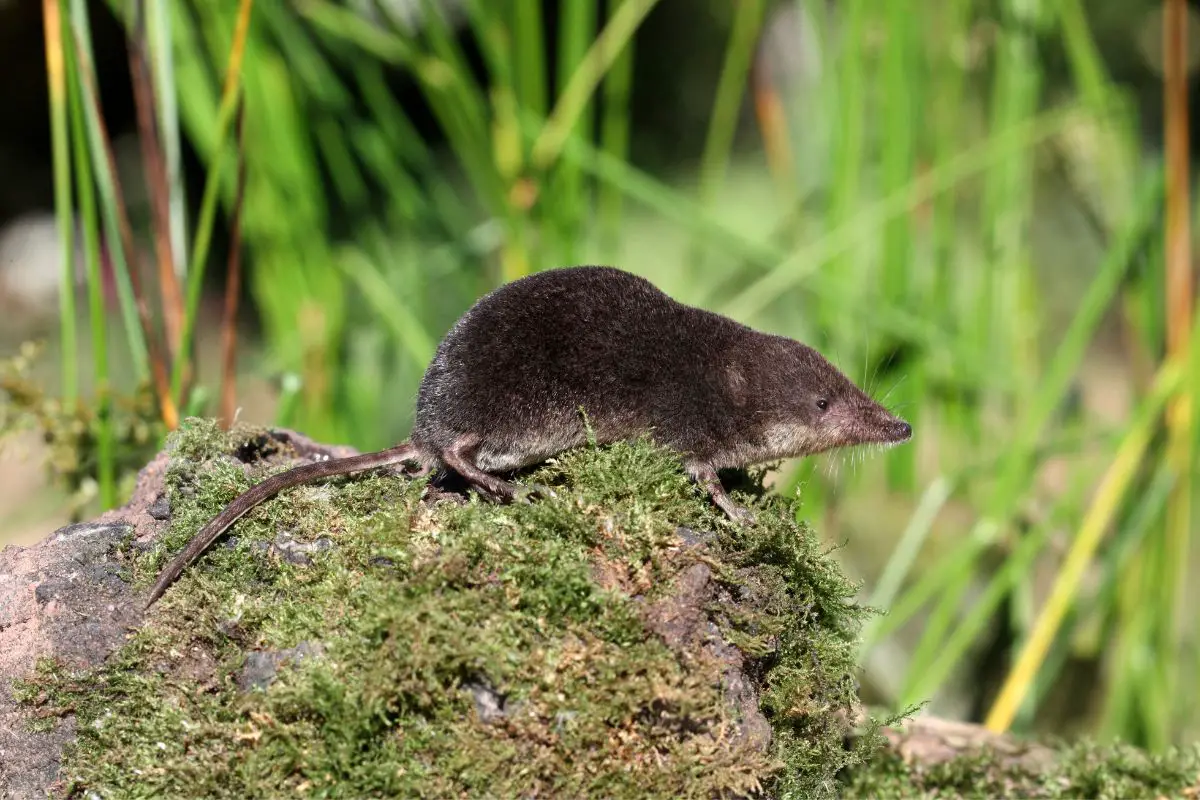
Asian shrew is also known as house-shrew, Indian musk shrew, and gray must shrew.
Where It Lives?
Asian house shrews are native to south and southeast Asia and reside in those regions for the most part.
Eating Habit
The Asian house shrews’ regular diet consists of nuts, seeds, and insects. However, one of the most surprising traits about them is that they are known to often devour small snakes and rat babies.
Animal Type
The Asian house shrews are classified as mammals.
Lifespan
In captivity, a house shrew can live up to 3.5 years.
Weight & Height
The Asian house shrew can weigh from 1.4 to 3.5 oz., while its body measurements vary from 6 to 7 inches.
Habitat & Behavior
They live in grasslands, shrublands, wetlands, forests, human residences, etc.
Asian house shrews mostly live lonely lives. They only come close to each other, mainly their partners, for mating and raising their offspring.
How It’s Similar to Moles?
The Asian house shrews are similar to moles in terms of weight as well as lifestyle. Both prefer to live solitary lives, and both weigh around 3.5 oz on average.
How It’s Different from Moles?
Asian house shrews don’t dig the soil to create tunnels but only to find insects. They also inhabit human houses, unlike moles.
7. Arctic Shrew

Popularly known as black-backed or saddleback shrew, the arctic shrew is a small bicolor mammal.
Where It Lives?
The arctic shrew lives in the northern parts of the United States and Canada.
Eating Habit
Arctic shrews live on insects like moth larvae, fly larvae, grasshoppers, adult beetles, aquatic insects, etc.
Animal Type
Arctic shrews are mammals in the Eulipotyphla order.
Lifespan
Arctic shrews can live up to 1.5 years in the wild.
Weight & Height
Arctic shrews can weigh from 0.1 to 0.5 oz., while their length may reach up to 5 inches.
Habitat & Behavior
Arctic shrews live near bogs, swamps, and lakes. They’re solitary, territorial mammals who stay active throughout the day as well as through the night. Moreover, they can move extremely swiftly.
How It’s Similar to Moles?
Like moles, arctic shrews live primarily on insects. They’re also solitary mammals like moles.
How It’s Different from Moles?
Arctic shrews are much smaller than moles in size and weight. They also inhabit drastically different habitats than moles.
8. Naked Mole Rat
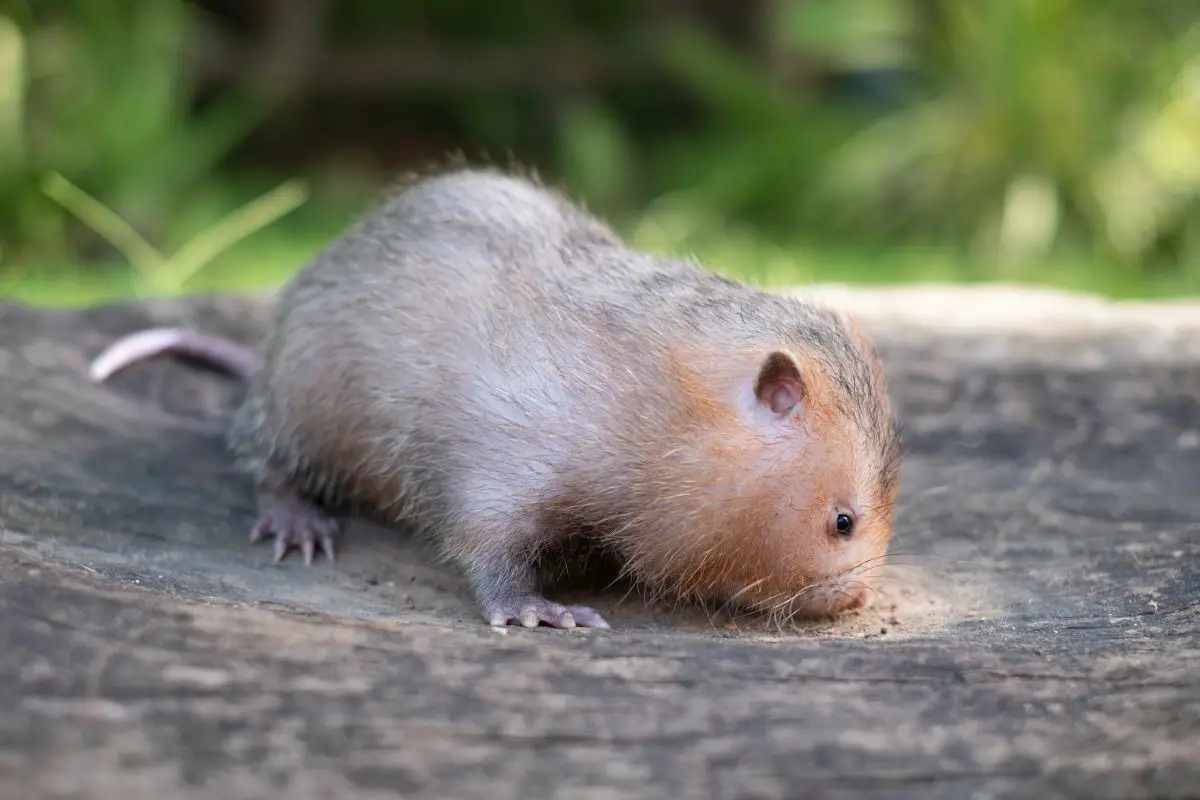
The naked mole rats are also known as sand puppies. They thrive in harsh underground areas.
Where It Lives?
Naked mole rats are native to East Africa and that is where you will find them in the greatest quantity.
Eating Habit
Naked mole rats survive on a diet that mostly consists of underground plants such as tubers and roots.
Animal Type
Mole rats are mammals in the Rodentia order.
Lifespan
Surprisingly, naked mole rats can live from as little as 4 years and up to 30 years.
Weight & Height
Male mole rats can weigh up to 1.2 oz., while the queen of the lot can be as big as 2.5 oz. Their typical length can reach up to 3 inches.
Habitat & Behavior
The Naked mole rats live under burrows and in semi-arid places.
Mole rats are eusocial mammals where only one female is responsible for reproduction. Whereas, the rest of the rats in the colony work to survive together.
How It’s Similar to Moles?
Like moles, mole rats live underground for the most part of their lives.
How It’s Different from Moles?
Mole rats don’t live on insects as moles do. They also don’t live a solitary life as moles do.
9. Mole Crab
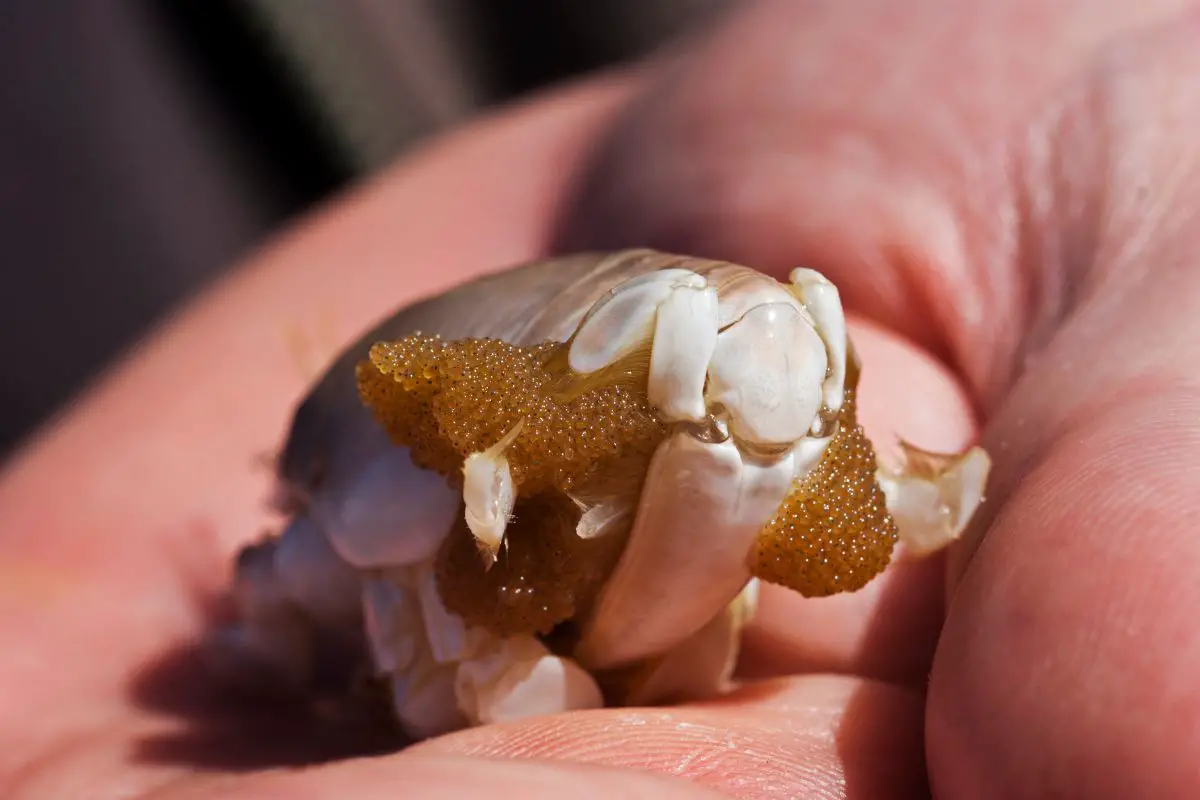
Mole crabs are also known as Pacific mole crabs or Pacific sand crabs.
Where It Lives?
Mole crabs live on the temperate western coasts of South and North America.
Eating Habit
Mole crabs feed on small aquatic plants and planktons. They also eat Portuguese jellyfish.
Animal Type
Mole crabs belong to the Malacostraca animal class.
Lifespan
A mole crab can live about 2 to 3 years.
Weight & Height
A mole crab can weigh up to 0.25 oz., while its size can be up to 1.5 to 2.5 inches.
Habitat & Behavior
The mole crabs live near the surf zone of the sea. They dig the sand rapidly in a backward burrowing gesture.
How It’s Similar to Moles?
Mole crabs dig burrows like moles. But the difference is that mole crabs don’t build extensive tunnel connections as moles do.
How It’s Different from Moles?
Mole crabs live near the surf zone of the sea, whereas moles live in the grasslands and woodlands.
10. Tenrec
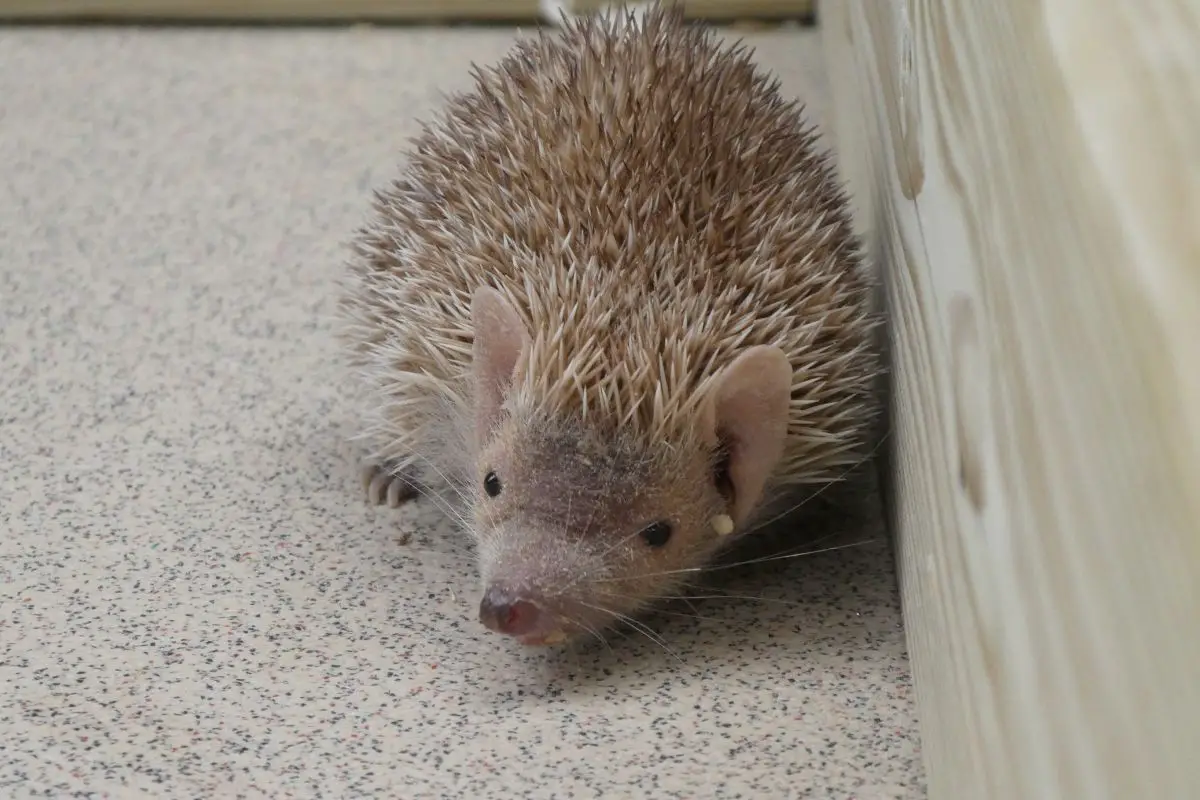
Tenrec is a colorful mammal that belongs to the afrotherian family.
Where It Lives?
Tenrec is native to Madagascar, and that’s where it mostly resides.
Eating Habit
Tenrecs are omnivorous. They feed on invertebrates, small mammals, reptiles, amphibians, fruits, and vegetables as well.
Animal Type
Tenrecs belong to the mammal class.
Weight & Height
Tenrecs weigh just about 0.2 oz. or less, while they can grow up to 1.9 inches in length.
Habitat & Behavior
Tenrecs live in dry forests and coastal areas. Male tenrecs fight each other during mating season and mostly live alone in hibernation.
How It’s Similar to Moles?
Tenrecs are solitary mammals just like moles. Their insectivorous dietary preferences are similar to that of moles as well.
How It’s Different from Moles?
Tenrecs are tiny compared to moles in terms of size and weight. Their habitation also differs from that of moles.
FAQs About Animals Similar to Moles
Are Moles and Shrews the Same?
Moles and shrews belong to the mammal category in the animal kingdom. However, their appearance, size, habitat, diet, etc., differ. Moles are bigger than shrews, and they live mostly underground.
Shrews have longer snouts and thicker tails. Moreover, moles’ eyes and ears aren’t visible through their furs. Moles live in the grasslands and woodlands, whereas shrews live in the forests, croplands, and human residences.
Moles also have larger front feet, which help them to dig deeper into the ground.
How Are Moles Different From Voles?
Moles have larger front feet and beady eyes. Their ears and eyes are almost invisible to naked eyes due to their thick fur. On the other hand, voles or meadow mice look like rats, and they’re much smaller in size.
Moles are dark in color, while the voles have reddish-brown fur.
Are Moles Rodents?
Although moles look like rodents, they’re scientifically not completely rodents. Instead, they are better described as a part of the rodent species. For instance, moles have different diets and habitats than rodents.
Moles don’t belong to Rodentia; they belong to Eulipotyphla. This family includes animals such as hedgehogs, desman, and shrews.
